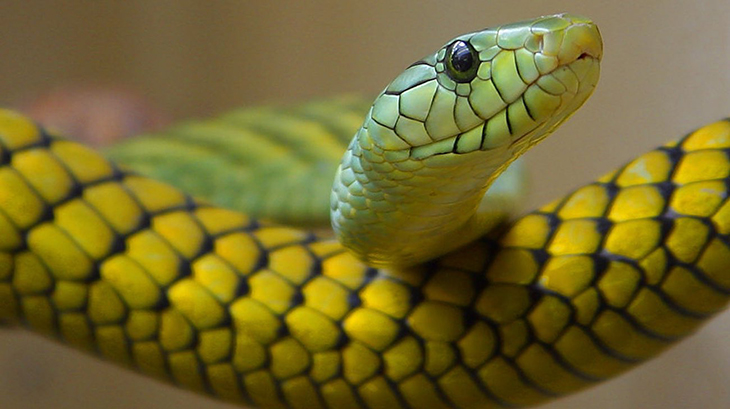Scientists Discover Potential Universal Anti-Venom To Treat a Variety Of Snakebites, From Kraits To King Cobras

Scientists have taken significant strides towards developing a universal antivenom for snakebites by screening billions of human antibodies. Through this screening process, they identified an antibody capable of counteracting a venom protein found in various snake species, including king cobras and black mambas.
Researchers at the Scripps Research Institute conducted experiments demonstrating that this antibody effectively protected mice against a range of snake venoms. Their findings were published in the journal Science Translational Medicine.
While hospitals in snake-prone regions typically carry antivenom to counteract snakebite toxicity, the field of antivenom development remains relatively underdeveloped and lacking in sophistication.
Current antivenoms are derived from animals that have developed immunity to the venom of specific snake species through exposure therapy. However, this approach only provides protection against a single snake species, posing challenges in regions where humans may encounter multiple snake species.
“This antibody works against one of the major toxins found across numerous snake species that contribute to tens of thousands of deaths every year. This could be incredibly valuable for people in low and middle-income countries that have the largest burden of deaths and injuries from snakebites,” says senior author Joseph Jardine, PhD, assistant professor of immunology and microbiology at Scripps Research.
Scripps has consistently been recognized as a leading institution in the United States, securing the top spot multiple times and ranking second globally for biomedical breakthroughs. Its faculty boasts several Nobel laureates.
Similar to most animals, snakes resort to attacking humans when they feel trapped, startled, or are attempting to flee. Given that snakes primarily prey on rodents and rural areas are often agriculturally active, humans frequently find themselves in close contact with snakes seeking out rodents. Unfortunately, this proximity often results in fatalities and amputations across Asia, South America, Africa, and Australia.
In their recent research, scientists isolated and compared venom proteins from various elapid snakes, such as mambas, cobras, and kraits. Their analysis revealed that a specific type of protein called three-finger toxins (3FTx), present in all elapid snakes, shared similarities across different species.
These 3FTx proteins are notorious for their high toxicity and their role in inducing complete body paralysis, making them prime targets for therapeutic interventions. To develop an antibody capable of neutralizing 3FTx, researchers devised an innovative platform wherein genes for 16 different 3FTx were introduced into mammalian cells to produce the toxins in laboratory settings. Subsequently, they screened a vast library of over fifty billion human antibodies to identify those capable of binding to the 3FTx protein.
Among the 30 antibodies identified through this screening process, one antibody, known as 95Mat5, displayed the strongest interactions across all toxin variants.
“We were able to zoom in on the very small percentage of antibodies that were cross-reactive for all these different toxins. This was only possible because of the platform we developed to screen our antibody library against multiple toxins in parallel,” says Irene Khalek, a Scripps Research scientist and first author of the new paper.
Jardine, Khalek, and their colleagues conducted experiments to evaluate the impact of 95Mat5 on mice injected with toxins from various venomous snakes, including the many-banded krait, Indian spitting cobra, black mamba, and king cobra. Remarkably, mice that received injections of 95Mat5 were not only shielded from death but also from paralysis in all instances.
Upon investigating the mechanism behind 95Mat5’s effectiveness in neutralizing 3FTx variants, the researchers uncovered that the antibody mimics the structure of the human protein typically targeted by 3FTx.
While 95Mat5 demonstrates efficacy against the venom of all elapids, it does not inhibit the venom of vipers – the second group of venomous snakes prevalent in the United States, encompassing nearly all poisonous snake species.
Jardine’s team is currently engaged in the pursuit of broadly neutralizing antibodies targeting another elapid toxin, as well as two viper toxins. They hypothesize that combining 95Mat5 with these additional antibodies could offer comprehensive protection against a wide range of snake venoms.
“We think that a cocktail of these four antibodies could potentially work as a universal antivenom against any medically relevant snake in the world,” says Khalek.



